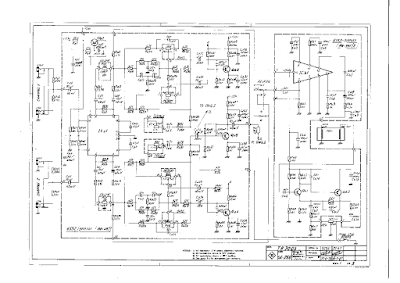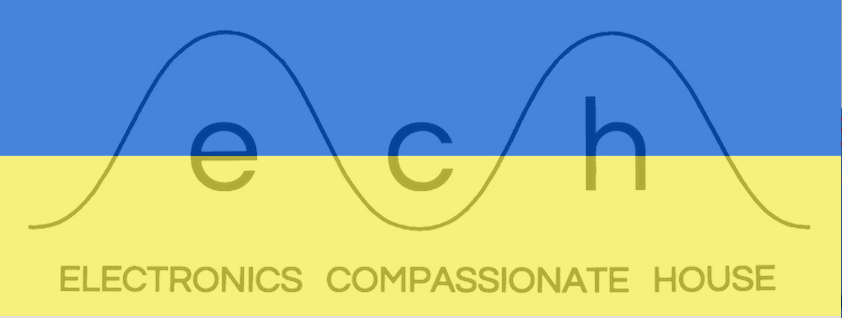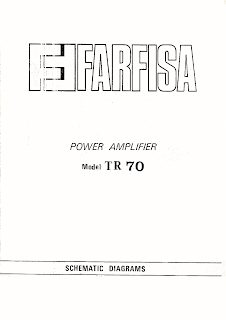I own a FARFISA TR70 solid state amplifier (in the background of a Rhodes photo in another post). It is a nice (but heavy) and powerful amp with an organ channel and a guitar channel and spring reverb. I don't often use this amp anymore simply because I am old now and it weighs too much. Most of my gigs are solo shows using reel-to-reel tape loops and keyboards fed through a Roland RE201 echo. Getting this stuff in my bike trailer is more than crazy enough. I can't bear to part with it, however, since it is rare to find an amp dedicated to organs (I generally use a borrowed bass amp if I am playing full band stuff).
One of the last times I used it I shared it with another band. I happened to miss their set and I don't know what they did to it, but it was returned all screwed up!
The pots were very scratchy and the output would die as the input sound decayed. Also the reverb stopped working. It "worked" but sounded "broken", barely limping into action. The noise floor was higher as well.
I put it away and didn't worry, but lately have been missing it.
I cleaned all contacts, pots, ground connections and jacks. There was still scratchy noise on the pots (even when no signal was passing). This sounded like DC riding the signal to me so I changed any electrolytic cap in the signal path (decoupling caps that block DC but pass the AC signal). I also changed a few pots that had mechanical damaged (pushed in and popped backing). This helped but didn't eliminate the problem entirely on Channel 2 (guitar).
This amp has a "soft start" circuit slowly raising the voltage to the preamp board. A large cap and resistor form an RC circuit that slowly charges, turning on a transistor that feeds the Vcc to the preamp. I changed the cap to restore the original timing. It takes almost 30 seconds for the voltage to rise to max and this period leaves the preamp in a weird transitional state. Not quite sure what to make of it. If this is just an anti-pop circuit the RC constant could be much shorter. Maybe the slow rise was meant to emotionally emulate the warm-up of a tube amp!
 | |
| Inputs and Preamp (left) and Reverb (right) |
I replaced the TBA231 IC (preamp) with another dual OPAMP with a different pinout that I had on hand by adding jumpers to the IC pins and spidering it into the socket (TBA231 on the way from Israel right now) and this drastically reduced the hiss problem in both channels. Shorting the preamp isolated the power amp section and killed the noise and this showed that it was generated in the preamp section. When the NOS TBA231 arrives I will test and try some more noise cures. Most of the hiss is found in channel 2 which is a higher gain channel and this makes sense. Some hiss is independent of volume controls and is therefore being generated after the TBA231 and before or in the next two gain stages before the power amp. Replacing these transistors is a possible cure. I also changed some small caps that act as low-pass filters cutting anything above audio out of the signal. High-freq noise can be filtered by other parts of the circuit and appear in your signal as audio-freq hiss.
 |
| Power Supply (bottom) and Power Amp (top) |
I replaced the "stabilizing transistor" (part of the power supply). All voltages measured within spec. I did not recap the power supply since I had no real hum issues and it was physically difficult to do (awkward box). This would be a reasonable thing to do while restoring an amp of this era. This being a solid-state amp, the voltages involved are much lower than in a tube amp.
I replaced the OUTPUT transistors thinking that this was the cause of the "strangled" output break-up. I briefly turned the whole amp into a high powered oscillator when I changed the big transistors. A small wire was caught in the nut that was making the connection for the COLLECTOR (the can itself is the collector on these two lead transistors) and I had an open collector on the output. This was alarming - it made a mad screaming sound - but easily diagnosed and fixed. This restored full volume and proper decay to the output.
I removed and tested the reverb tank and found it to be no good. All components on the reverb amp and recovery board seemed fine. A new tank was inserted and it worked again.
I certainly can't blame all these problems on the opening band, this amp was already old. There is typical rust, corrosion, dirt, hair, etc... going on in there.
I didn't reassemble and test after each step in the repair. I probably could have had a usable amp simply by replacing the output devices. It is in much much better shape now and I will finish the job when the TBA231 arrives! Delighted to have this nice amp back in order.

